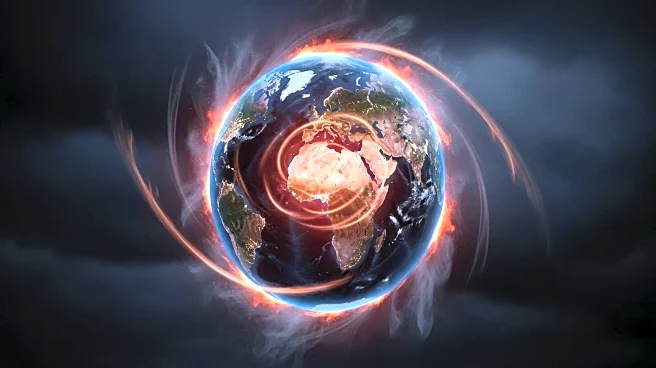What's Happening?
Researchers from the University of California, Irvine, and other institutions have identified a paradox in global wildfire trends. Despite a 26% decline in total burned area from 2002 to 2021, human exposure to wildfires has increased by nearly 40%. The study, published in Science, highlights that 85% of human exposure to wildfires occurred in Africa, with five central African countries accounting for half of the global exposure. In contrast, the United States, Europe, and Australia collectively accounted for less than 2.5% of the total exposure. The study also notes that California experiences a disproportionately large share of U.S. fire impacts, with 72% of human exposures despite comprising only 15% of the nation's burned area. The increase in human exposure is attributed to population growth and migration into fire-prone areas, rather than a global increase in fire activity.
Why It's Important?
The findings underscore the growing vulnerability of human populations to wildfires, particularly in regions that receive less international attention. The study emphasizes the need for proactive mitigation strategies to protect communities from the increasing threat of wildfires. These strategies include vegetation management techniques, public education, and engineering solutions to reduce human-caused ignitions. As climate change intensifies fire weather and populations continue to expand into fire-prone zones, these measures will be critical in reducing the risk of future wildfire disasters. The research highlights the importance of addressing both social and environmental factors in shaping wildfire risk.
What's Next?
The study calls for urgent implementation of proactive mitigation strategies to protect communities from wildfires. This includes prescribed fires, public education, and engineering solutions to reduce human-caused ignitions. As climate change continues to intensify fire weather, these strategies will become increasingly important in reducing the risk of future wildfire disasters. The research suggests that addressing the overlap between human settlements and fire-prone landscapes is crucial in mitigating wildfire impacts.
Beyond the Headlines
The study reveals a significant rise in the intensity of wildfires in North and South America, linked to climate change-driven amplification of 'fire weather.' This trend, combined with human activities such as land development and historical fire suppression practices, has led to an escalating risk of destructive fires in regions like California. The frequency of conditions conducive to extreme-impact wildfires has quadrupled from 1990 to 2022 across the state. The research highlights the need for a comprehensive approach to wildfire management that considers both environmental and social factors.














